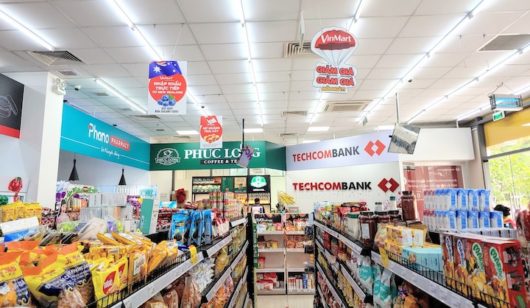Asia Pacific is leading the world in e-commerce. Between 2014 to 2019, APAC’s growth in online sales was nearly double that of the rest of the world, and by last year, e-commerce contributed to 19 per cent of sales across Asia-Pacific, compared to 11 per cent in the rest of the world.
It is predicted by 2040, 95 per cent of all purchases will be via e-commerce.
The world’s largest e-commerce market, China, valued at $672 billion in 2017, makes up more than 40 per cent of the globe’s retail e-commerce revenue, however moving forward, the fastest growth in retail e-commerce between 2018 and 2022 is expected to be in India and Indonesia.
Pandemic aside, the future of retail is online. Here are six ways e-commerce is becoming the smartest move for retailers this year and beyond.
Business continuity
For retailers who sell online, as opposed to in brick-and-mortar stores, it is easier to continue business as usual during the pandemic. And as consumers are forced to stay home, they now spend more time online. E-commerce retailers are open 24/7, and can now service consumers no matter what time of day or night they are browsing, and on any device.
In fact, online sales increased 55 per cent to US$66.3 billion in July this year compared with July last year, as customers who have not previously bought online, such as the older generations, are now moving to purchase what they need via e-commerce during isolation.
For those retailers with an existing e-commerce presence, shifting to sales entirely online was not a difficult proposition in 2020. Most good e-commerce solutions, such as Shopify Plus, are easily scalable, so adjusting for an influx of online shoppers was not only achievable, but desirable. Take leading global chocolate brand Lindt, for example, which managed to survive store closure challenges and pivot to online sales amidst the pandemic in just five days
Innovative customer experiences
Clever retailers quickly pivoted to better service their online consumers in the absence of physical stores, using technology such as augmented reality (AR), live chat, 3D imagery, and video, to enhance customer experience online. Some retailers, such as leading US luxury retailer Rebecca Minkoff, are already using AR modelling to bring their products to life, using features such as Shopify’s 3D models for shoppers who are unable to see and touch products in-store.
According to the company, shoppers who interacted with a 3D model were 44 per cent more likely to add it to their cart than those who had not. Of those visitors who interacted with a 3D model, they were 27 per cent more likely to place an order than those who hadn’t. When customers viewed a product in AR, Rebecca Minkoff says, they became 65 per cent more likely to make a purchase.
“3D media makes for a much more interactive shopping experience,” Uri Minkoff, co-founder and CEO of Rebecca Minkoff, said. “Customers can examine our products from every angle, including the option to view products in augmented reality, which helps them get a better sense of quality, size, and other details that matter.”
Better customer and product engagement
Traditional sellers reliant on face-to-face models of customer communication have struggled in 2020. However, those e-commerce retailers used to interacting with customers using an omnichannel approach have strengthened customer engagement across their various channels, building relationships and maintaining the level of personal attention consumers now expect.
This is because unlike physical stores, online stores can be personalised to individual shopper preferences. Everything from landing pages, to checkout experiences and product recommendations can be targeted at an individual level, making the entire experience feel more personal and streamlined, leading to happier customers.
Seamless social integration
Social media is now a powerful platform to sell online. In fact, recent data reveals 130 million Instagram users tap on shopping posts every month. E-commerce retailers with an established online presence and a mobile-first strategy are well placed to take advantage of the increased appetite for social media shopping, by integrating their e-commerce solution seamlessly into the social shopping experience.
One example is Australian-born cosmetic tooth-whitening mega brand HiSmile, which scaled its online tribe by leveraging social selling integrated with Shopify Plus, which linked social-media information directly tied to its sales funnel, which helped ensure its information was ready to be transferred and communicated across all apps in its e-commerce ecosystem.
To date, HiSmile can claim more than 3 million social media followers, 5.5 billion social media impressions, and more than 1.5 billion total views of its social videos. Those numbers suggested HiSmile was reaching an audience far and wide, and its global sales numbers further proved the point.
Direct to consumer (DTC) is here to stay
Even established brands with a significant brick-and-mortar presence are now recognising the benefits of selling direct to consumer (DTC). Internet Retailer reported 57 per cent of leading food and CPG manufacturers were already investing in direct-to-consumer offerings prior to Covid. DTC has a number of advantages over traditional sales models, including control of pricing, consumer messaging, data, and distribution.
On-demand promotion
Sales and promotions aimed directly at existing customers are easy to organise and execute in an e-commerce environment. Using a good e-commerce platform like Shopify Plus, sales journey, automated triggers, promotional newsletters and email alerts, and transactions can all be achieved at scale, at a fraction of the time it takes in store.
About the author: Shopify Plus simplifies the complex with commerce technology that’s both powerful and easy to use. We make the tools you need to grow, scale, and thrive. Get online 50-per-cent faster than traditional e-commerce platforms. Launch your DTC store with Shopify Plus.






